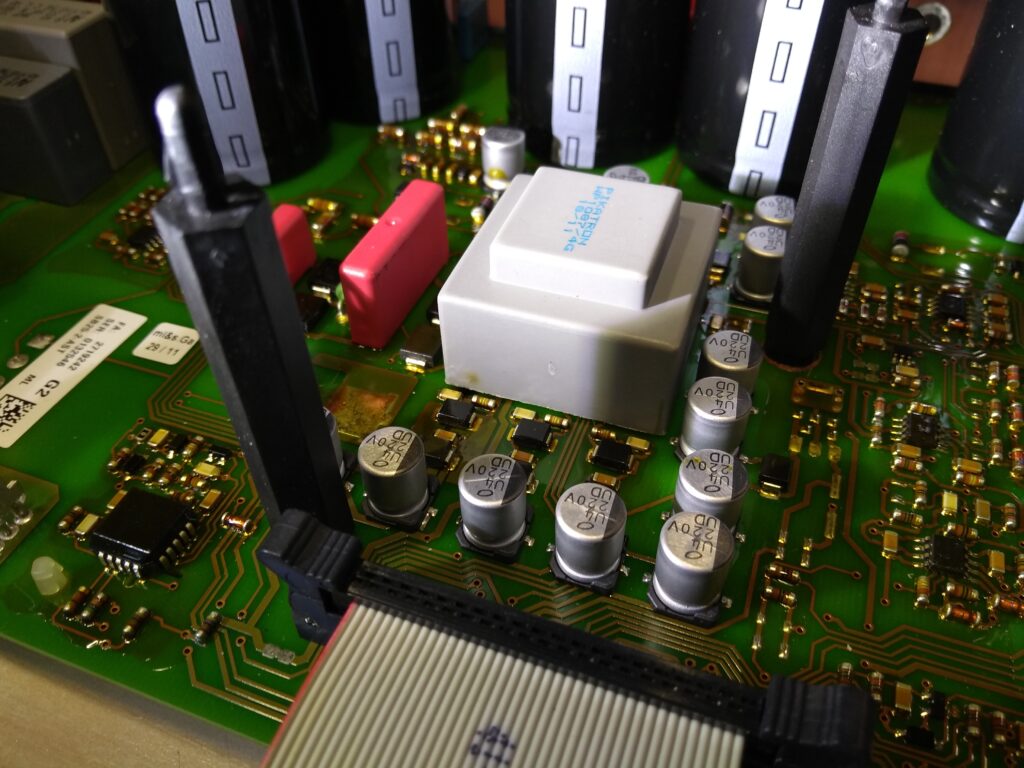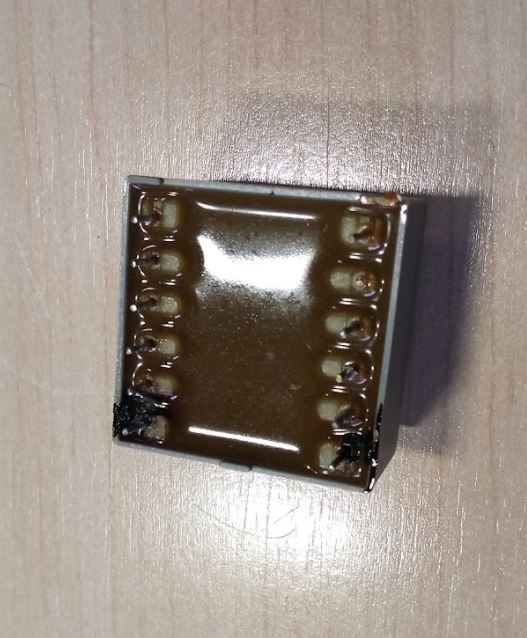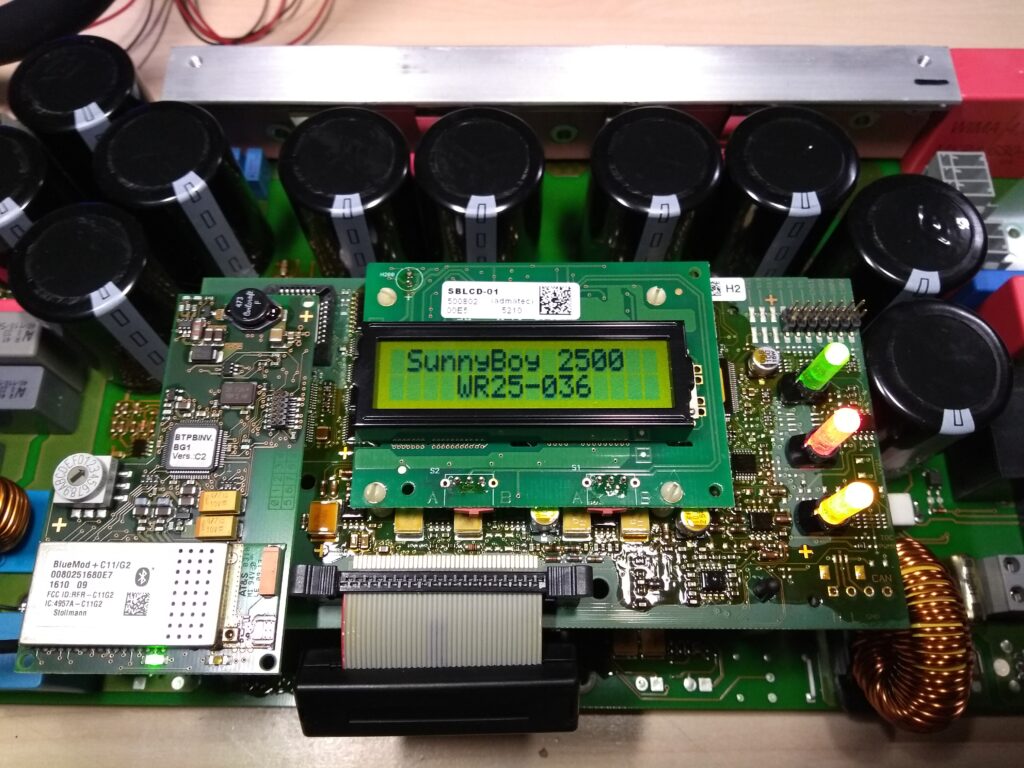SunnyBoy SB 2500 repair
Something different to repair this time. My neighbor’s solar inverter suddenly stopped working. He already replaced it with a newer model, but would like to keep this one as a spare. So, he asked if I could take a look.
The first thing that came to mind is: how do I power this inverter. I need to test the DC side of this – and it needs quite a high DC voltage. I solved this by wiring two transformers back-to-back with a simple bridge rectifier and a smoothing cap. So it basically serves as an isolation transformer. But with high DC voltage, you need to be really careful.
So, testing with the DC voltage – dead. Absolutely nothing. Checking the filtering caps – everything looks fine, but nothing powers on the logic board. I get power until the transformer. And yes – visual inspection reveals there’s an issue with it:

In the lower left corner, you can see there’s a brown spot. Desoldering reveals more damage – the primary winding is completely carbonized.

The transformer is a Pikatron WP1087/4g. It’s unfortunately a custom component from SMA. Neither SMA, nor Pikatron want to cooperate on specs. A shame really, for a company that sells green tech. The #RightToRepair movement hasn’t caught on there. A 20 Euro component, tops – but unavailable.
Local companies specializing in PV inverter repairs didn’t want to help out – instead quoting me investigation fees. I don’t need quotes – I already know what’s wrong; I just need the part. Luckily – I found a Dutch company willing to help. A big thanks to Interpaul BV – they supplied me a transformer at a decent price, and I gave them a little extra for their trouble. Win-Win, right?
A couple days later, the transformer arrived and I soldered it in. Works like a charm. Another good piece of kit, saved from the dump. SMA really need to step up their game to allow access to their custom components for repairs. Right-to-repair _is_ a thing, and it’s good for the environment.

73 de ON8AD